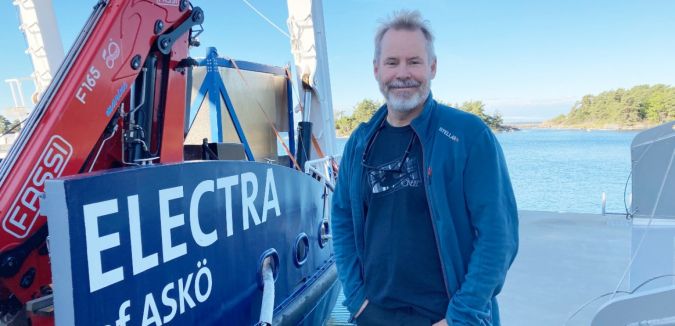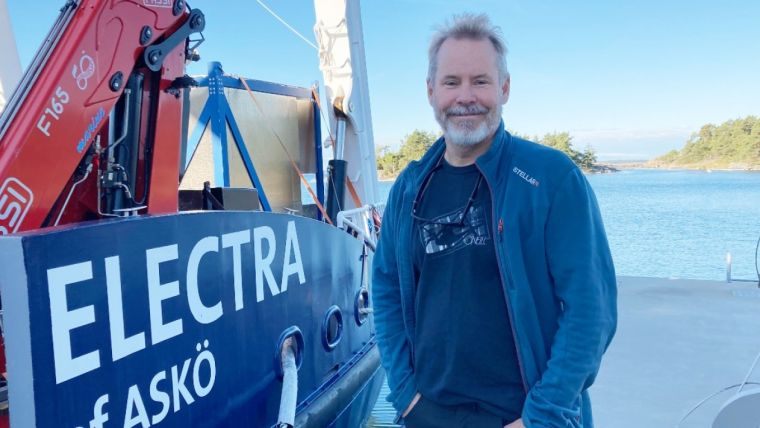Students Map the Baltic Seafloor
When students of the Stockholm University course in Marine Geophysical Mapping Methods collect sediment cores from the bottom of the Baltic Sea, the cores are immediately used in research. No sample material is wasted. The ability to map the seabed is a much sought-after skill in today’s job market.
For the second day in a row, the research vessel Electra af Askö sets sail with students from the Marine Geohysical Mapping Methods course on board. The day before, they learned how to use multibeam sonar and penetrating echosounder to get a picture of the seafloor topography and uppermost sediment depositions. Today, they will take sediment cores from two selected locations on the bottom profile.
Used in Groundwater Research
Six of the 16 students are from other countries than Sweden, and the course is all in English. Professor Martin Jakobsson from the Department of Geological Sciences (IGV), coordinator of the course, points to the black and white sonar image, revealing a few tens of metres of accumulated bottom sediments. Almost everywhere, glacial varved clay is visible in neat layers. “But here there are anomalies, blank spots,” explains Martin Jakobsson, “probably because there is more water in the sediments there. It could be groundwater.”
The sediment cores that the students take from Asköfjärden, close to Stockholm University’s field station Askö laboratory in the Trosa archipelago south of Stockholm, are used in a research project on how groundwater seeps into the Baltic Sea.
“We are trying to find out where, how and in what quantities this happens,” says Jakobsson. “Groundwater can carry substances from land to sea and is a source of pollution dispersion.”















